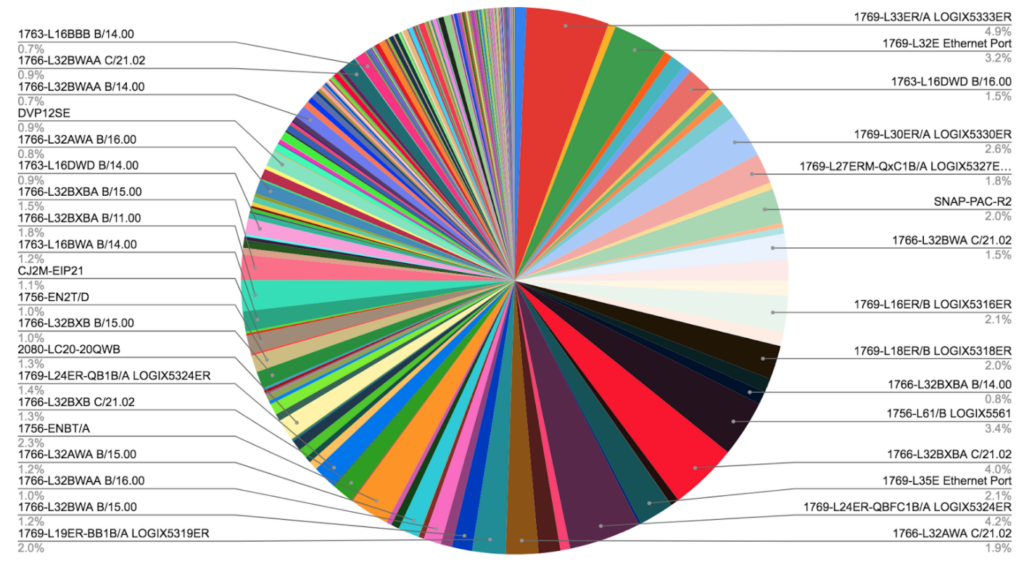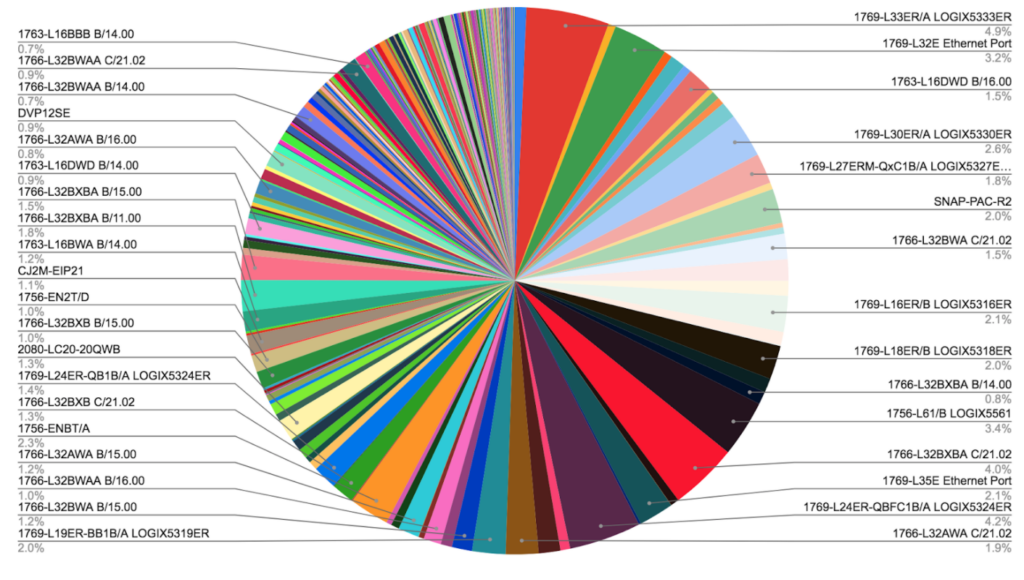Experts found a critical flaw in Real-Time Automation’s (RTA) 499ES EtherNet/IP stack that could allow hacking industrial control systems.
Tracked as CVE-2020-25159, the flaw is rated 9.8 out of 10 in severity by the industry-standard Common Vulnerability Scoring System (CVSS) and impacts all versions of EtherNet/IP Adapter Source Code Stack prior to 2.28, which was released on November 21, 2012.
Security researchers from security company Claroty have discovered a critical flaw in Real-Time Automation’s (RTA) 499ES EtherNet/IP (ENIP) stack that could be exploited by a remote attacker to hack the industrial control systems.
“Claroty has privately disclosed details to Real Time Automation (RTA), informing the vendor of a critical vulnerability in its proprietary 499ES EtherNet/IP (ENIP) stack. The vulnerability could cause a denial-of-service situation, and depending on other conditions, could expose a device running older versions of the protocol to remote code execution.” reads the security advisory published by Claroty.
RTA’s ENIP stack is widely implemented in industrial automation systems.
The flaw, tracked as CVE-2020-25159, has received a CVSS score of 9.8 out of 10, it impacts all versions of EtherNet/IP Adapter Source Code Stack prior to 2.28.
Brizinov reported the stack overflow issue to the US agency CISA that published a security advisory.
“Successful exploitation of this vulnerability could cause a denial-of-service condition, and a buffer overflow may allow remote code execution,” reads the advisory published by the US cybersecurity and infrastructure agency (CISA). “The affected product is vulnerable to a stack-based buffer overflow, which may allow an attacker to send a specially crafted packet that may result in a denial-of-service condition or code execution.”
Experts used the search engines for Internet-connected devices, like Shodan.io, to search for ENIP-compatible internet-facing devices and discovered more than 8,000 systems exposed online.

Experts was that vendors may have bought vulnerable versions of this stack before the 2012 update and are still using it in their firmware.
“However, many vendors may have bought vulnerable versions of this stack prior to the 2012 update, starting in the early 2000s when it was first issued, and integrated it into their own firmware. This would leave many running in the wild still today.” continues the report.
“Claroty researchers were able to scan 290 unique ENIP-compatible devices, which identified 32 unique ENIP stacks. Eleven devices were found to be running RTA’s ENIP stack in products from six unique vendors.”
Operators have to update to current versions of the ENIP stack to address the vulnerability. CISA provided the following recommendations to minimize the risk of exploitation of this vulnerability:
- Minimize network exposure for all control system devices and/or systems, and ensure that they are not accessible from the Internet.
- Locate control system networks and remote devices behind firewalls, and isolate them from the business network.
- When remote access is required, use secure methods, such as Virtual Private Networks (VPNs), recognizing that VPNs may have vulnerabilities and should be updated to the most current version available. Also recognize that VPN is only as secure as the connected devices.
(SecurityAffairs – hacking, industrial automation systems)
Share On
Pierluigi Paganini
Pierluigi Paganini is member of the ENISA (European Union Agency for Network and Information Security) Threat Landscape Stakeholder Group and Cyber G7 Group, he is also a Security Evangelist, Security Analyst and Freelance Writer. Editor-in-Chief at “Cyber Defense Magazine”, Pierluigi is a cyber security expert with over 20 years experience in the field, he is Certified Ethical Hacker at EC Council in London. The passion for writing and a strong belief that security is founded on sharing and awareness led Pierluigi to find the security blog “Security Affairs” recently named a Top National Security Resource for US. Pierluigi is a member of the “The Hacker News” team and he is a writer for some major publications in the field such as Cyber War Zone, ICTTF, Infosec Island, Infosec Institute, The Hacker News Magazine and for many other Security magazines. Author of the Books “The Deep Dark Web” and “Digital Virtual Currency and Bitcoin”.
Experts found a critical flaw in Real-Time Automation’s (RTA) 499ES EtherNet/IP stack that could allow hacking industrial control systems.
Tracked as CVE-2020-25159, the flaw is rated 9.8 out of 10 in severity by the industry-standard Common Vulnerability Scoring System (CVSS) and impacts all versions of EtherNet/IP Adapter Source Code Stack prior to 2.28, which was released on November 21, 2012.
Security researchers from security company Claroty have discovered a critical flaw in Real-Time Automation’s (RTA) 499ES EtherNet/IP (ENIP) stack that could be exploited by a remote attacker to hack the industrial control systems.
“Claroty has privately disclosed details to Real Time Automation (RTA), informing the vendor of a critical vulnerability in its proprietary 499ES EtherNet/IP (ENIP) stack. The vulnerability could cause a denial-of-service situation, and depending on other conditions, could expose a device running older versions of the protocol to remote code execution.” reads the security advisory published by Claroty.
RTA’s ENIP stack is widely implemented in industrial automation systems.
The flaw, tracked as CVE-2020-25159, has received a CVSS score of 9.8 out of 10, it impacts all versions of EtherNet/IP Adapter Source Code Stack prior to 2.28.
Brizinov reported the stack overflow issue to the US agency CISA that published a security advisory.
“Successful exploitation of this vulnerability could cause a denial-of-service condition, and a buffer overflow may allow remote code execution,” reads the advisory published by the US cybersecurity and infrastructure agency (CISA). “The affected product is vulnerable to a stack-based buffer overflow, which may allow an attacker to send a specially crafted packet that may result in a denial-of-service condition or code execution.”
Experts used the search engines for Internet-connected devices, like Shodan.io, to search for ENIP-compatible internet-facing devices and discovered more than 8,000 systems exposed online.

Experts was that vendors may have bought vulnerable versions of this stack before the 2012 update and are still using it in their firmware.
“However, many vendors may have bought vulnerable versions of this stack prior to the 2012 update, starting in the early 2000s when it was first issued, and integrated it into their own firmware. This would leave many running in the wild still today.” continues the report.
“Claroty researchers were able to scan 290 unique ENIP-compatible devices, which identified 32 unique ENIP stacks. Eleven devices were found to be running RTA’s ENIP stack in products from six unique vendors.”
Operators have to update to current versions of the ENIP stack to address the vulnerability. CISA provided the following recommendations to minimize the risk of exploitation of this vulnerability:
- Minimize network exposure for all control system devices and/or systems, and ensure that they are not accessible from the Internet.
- Locate control system networks and remote devices behind firewalls, and isolate them from the business network.
- When remote access is required, use secure methods, such as Virtual Private Networks (VPNs), recognizing that VPNs may have vulnerabilities and should be updated to the most current version available. Also recognize that VPN is only as secure as the connected devices.
(SecurityAffairs – hacking, industrial automation systems)




